If you drive in Alberta, you’ve likely experienced at least one skid in your motoring lifetime. Even high-tech features like all-wheel drive and electronic stability control cannot completely guarantee that your vehicle won’t lose traction on an icy road. That’s probably why a majority of AMA members told us that they wanted the straight goods on how to steer out of a skid.
KNOW YOUR SKID
There are two main types of skids …
 Front-Wheel: Front tires lose traction due to excessive speed or hard braking through a corner—so the vehicle turns less than you intend. Also called an understeer skid.
Front-Wheel: Front tires lose traction due to excessive speed or hard braking through a corner—so the vehicle turns less than you intend. Also called an understeer skid.
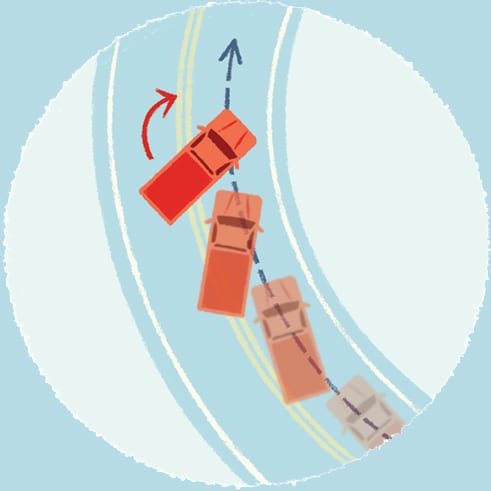 Rear-Wheel: Also known as an oversteer skid—and more common to rear-wheel drive vehicles. Back tires lose grip when turning and the tail end drifts sideways.
Rear-Wheel: Also known as an oversteer skid—and more common to rear-wheel drive vehicles. Back tires lose grip when turning and the tail end drifts sideways.
MORE TO READ
Pedestrian scrambles: how to cross like a boss
MOVE YOUR FEET
This depends on how you got into the skid.
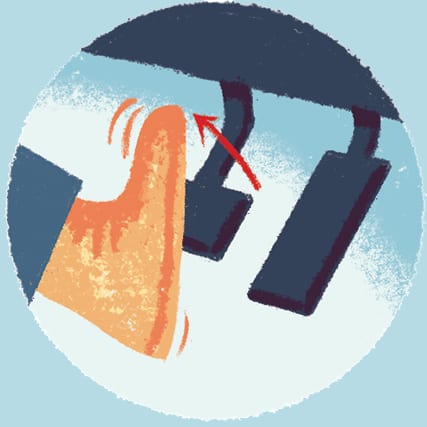 Brake too hard? Take your foot off the brake. Your tires need to start rolling again to regain traction.
Brake too hard? Take your foot off the brake. Your tires need to start rolling again to regain traction.
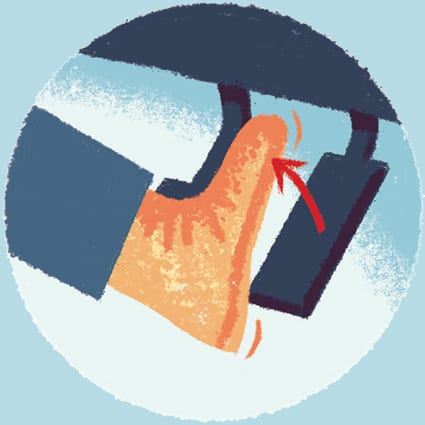 Accelerate too fast? Ease off the gas pedal (but don’t brake). Your tires need to spin less quickly to regain traction.
Accelerate too fast? Ease off the gas pedal (but don’t brake). Your tires need to spin less quickly to regain traction.
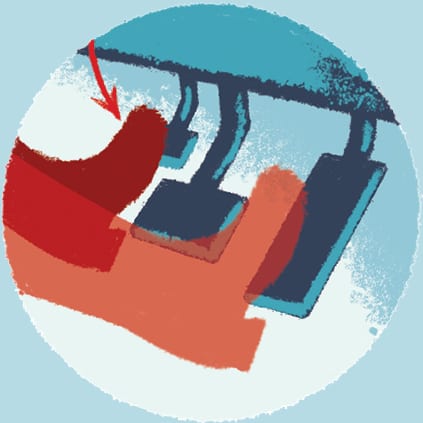 Save the Manual: If you’re in a manual transmission vehicle, disengage the clutch to take power from the drive wheels—but, as above, don’t brake.
Save the Manual: If you’re in a manual transmission vehicle, disengage the clutch to take power from the drive wheels—but, as above, don’t brake.
WATCH OUT
Look where you want to go, as you’re more apt to steer in that direction—rather than into a hazard you’d prefer to avoid.
MORE TO READ
What you need to know about all-weather tires
GIVE YOURSELF A HAND
Stay calm and make small, controlled steering adjustments, otherwise you risk over-correcting.
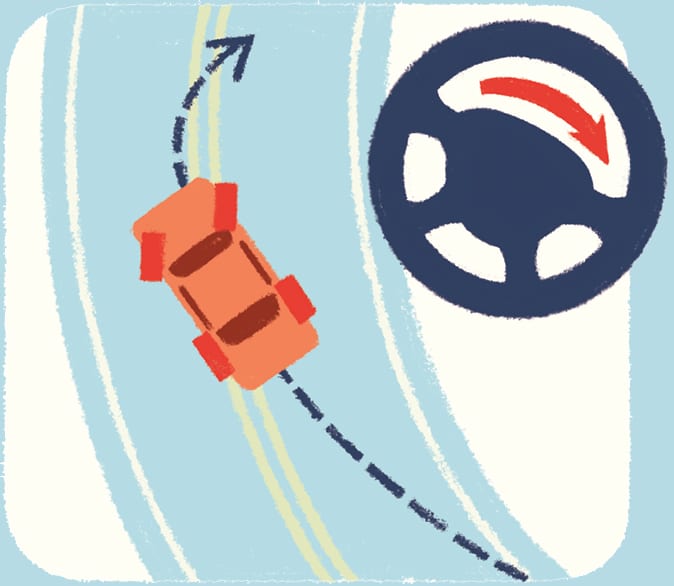 Front Wheel: Turning when the skid started? Ease off gas and straighten front wheels. When traction returns, steer gently in the direction you want to go.
Front Wheel: Turning when the skid started? Ease off gas and straighten front wheels. When traction returns, steer gently in the direction you want to go.
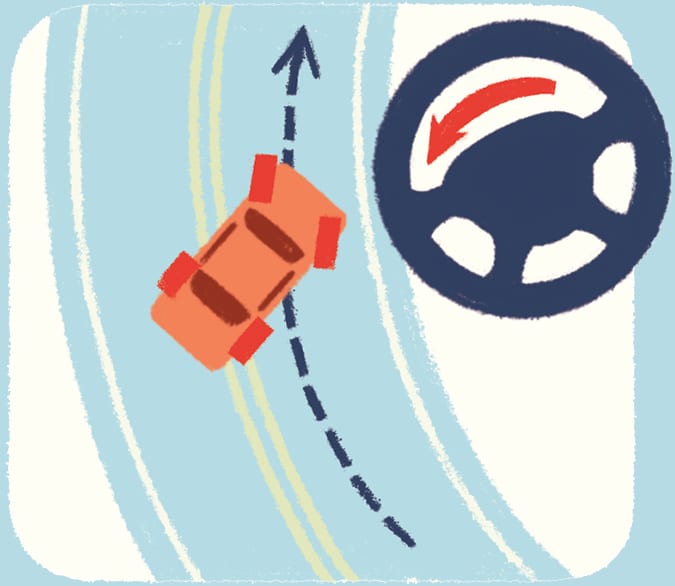 Rear Wheel: Look and steer where you want to go. As tires regain grip and vehicle straightens out, counter-steer slightly to avoid fishtailing.
Rear Wheel: Look and steer where you want to go. As tires regain grip and vehicle straightens out, counter-steer slightly to avoid fishtailing.
PREVENTIVE MEASURES
Follow these tips to reduce your chances of skidding.
• Slow down and be aware of challenging road conditions—especially on bridges, beneath underpasses and at intersections.
• Anticipate lane changes, curves and turns. Steer smoothly and precisely, with your hands at 9 and 3 o’clock on the wheel.
• Install winter tires on all four of your vehicle’s wheels. They offer better traction when temperatures dip below 7 C.
• Don’t depend on your vehicle’s high-tech components—even anti-lock brakes or all-wheel drive—to bail you out.
• Take a winter driving lesson with AMA to improve your braking, steering and accelerating skills in difficult conditions.
